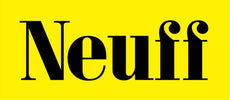
Beat the Heat: Cooling Strategies for Athletes
BY BEN HAWKES
In 2019, I had my first experience with extreme heat in a sporting context. I was on the British U20 team headed out to Mannheim, Germany, for the Bauhaus Junior Gala - a phenomenal meet held at a small, gorgeous provincial track an hour South of Frankfurt.
MANNHEIM TRAINING CENTRE

Underneath the tented roof of the grandstand lies a weight room, multiple therapy rooms, and changing rooms. Behind them is a 200m indoor track complete with throwing walls, a gymnastic area and an angled ceiling to allow for pole vault training on the far side. Our camp was established in the weight room, running parallel to the last 30m of the home straight.
Windows on the upper quarter of the trackside wall were propped open, yet in the weight room - and therefore, our base - it was easily over 40ºc. The official temperature that day was 38ºc, which - for my very English genes - was an absurdity.
We had been warned about the heat before departure. I had *zero* experience of this and frantically googled hydration drink solutions to help me cope. Somehow, Google didn't show me any of the simple, tablet-form electrolyte products which are now readily available even in Sainsbury's. Instead, I found a recipe and bought some expensive salt, some lemon juice and some sugar. It ended up as a convulsion-inducing concoction, with which I didn't persist after my maiden sip.
Many athletes will go through a similar learning curve as they progress through the sport and - as we saw this summer - as temperatures rise domestically, too. We consequently thought it would be useful to provide a guide to avoiding heat stress and managing your health & performance in the hot weather - and wanted to explain (quickly and in a smooth 3-act narrative, no less) why it matters, too. Here goes:

WHY DOES THERMOREGULATION MATTER?
A hot environment can increase maximal muscle force via an improvement of the local muscular contractile properties and allow for improved intra- and intermuscular coordination. BUT…
Hot environments only seem to improve muscle performance in the morning, when central body temperature is at its lowest. This is - at least in part - because if central temperature continues to increase, there is a reduction in voluntary force production (translation: the brain won't allow the muscles to produce as much force as they can). SO…
In extreme heat, we aim to allow local muscle temperature to rise naturally, preventing our central temperature from getting too high.
(Local = muscle temperature, central = core temperature)
We do that with:
ADEQUATE HYDRATION & SUPPLEMENTS FOR ATHLETES

Obviously, we know hydration is important - I'm not going to explain that to you. But we can add things to our water to help our bodies get more from it. When we sweat, we don't just sweat out water - we sweat out Sodium, Chloride, Potassium & Glucose too. So when we hydrate, it's common sense to take these on board too.
As I mentioned before, it's awkward and disgusting to try doing that individually, but a few companies produce some good products in dissolvable tablet form to help.

Personally, I use SIS (not sponsored). Great taste, all batch tested and Informed Sport certified.
To learn more about hydration, watch this video: 3 Steps to Optimizing Hydration : 25 Min Phys
SUN SAFETY FOR ATHLETES
SUNSCREEN, SUNGLASSES & HATS

This is just basic sun safety. Take precautions to avoid skin damage, eye damage and headaches.
COOLING TOOLS FOR ATHLETES
GET COLD! (FEET, ARMPITS, NECK)

Cooling down in hot environments can become incredibly difficult, so here are some recommendations from Ross et al. (2013) 's paper:
ICE TOWELS
Wrap a load of ice cubes in a towel, tape either side of the cold area so they don't fall out, and put it round the back of your neck.
ICE PACKS
Under the armpits works a treat, or use an ice pack vest if you have access to one!
LOCAL COLD WATER IMMERSION AT EXTREMETIES
Exposure to ice-cold water up to the armpits is an effective pre-cooling method (DeGroot et al., 2013), as is foot exposure - but this has a higher faff barrier due to shoe & sock removal.
ICED BEVERAGE INGESTION
Invest in a Cold Flask. It will pay you back forever. Ice all your drinks and combine them with electrolytes!
These are (almost) as effective as whole body cold exposure but don't come with the associated decreases in local muscle temperature - which, as mentioned above, we want to encourage!
CHANGING UP ATHLETIC SESSION TIMES

If you know it's going to be a hot one - and you can switch up your day - change your training time to early morning or late evening. Stay away from peak heat as much as possible!
I hope that helps. Until next time!


Leave a comment